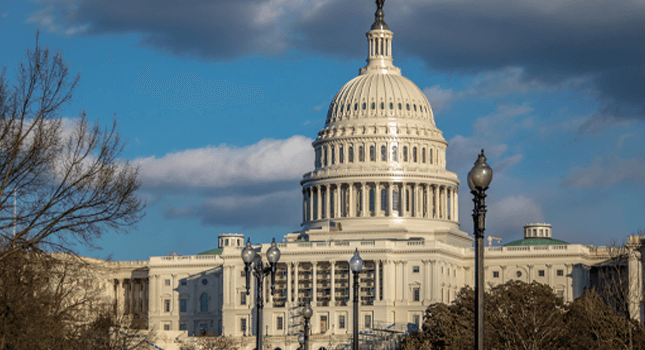by Oscar Macias, director of Education of Equity, Access, and Family Engagement for the Glendale Unified School District
According to the National Equity Project, educational equity means that each child receives what they need to develop to their full academic and social potential. Equity in education refers to the principle of providing all students with the necessary resources, opportunities, and support to achieve their full potential, regardless of their socio-economic background, race, ethnicity, gender, gender identity, sexual orientation, or other factors that may lead to disparities in educational outcomes. It aims to level the playing field and bridge the achievement gap, ensuring that every student has an equitable chance to succeed.
In June of 2023, the Supreme Court of the United States struck down race conscious student admissions at colleges and universities, effectively gutting affirmative action. This will likely have a ripple effect throughout our countries education, political, and social institutions as this will lead to more divide and controversy.
In the realm of public education, few words are as divisive as “equity.” Often touted as a solution to address disparities in educational outcomes, the concept of equity has sparked heated debates among educators, policymakers, and parents. While its intent is noble, the implementation and interpretation of equity have led to a polarized educational landscape. This article delves into the reasons behind the divisiveness of the word “equity” in public education and explores potential paths towards finding common ground.
To me this sounds rational and reasonable. I am proud to identify as a member of the BIPOC community. However, my experiences as a young student have shown me differently. I had some storied traumatic experiences that did not lend to the concept and practice of equity. As a public school teacher, school site administrator, and current Director of Equity, Access, and Family Engagement, I still see a disconnect with the idea and practice of equity.
The Divisive Nature of “Equity”
Varying Interpretations: The primary reason for the divisiveness of the term “equity” lies in its varied interpretations. Supporters of equity argue for targeted interventions and investment in underprivileged communities to uplift underserved students. Critics, on the other hand, often view equity as synonymous with a forced redistribution of resources and opportunities, which they believe could penalize high-performing schools and students. According to Keri D. Ingraham’s article titled “Equity Is Eroding Education” published in October 2022 in The American Center for Transformation Education website, “the drive for equity has bypassed the traditional goal of education in our public schools. Equity is no longer about providing equal opportunity but forcing performance outcomes.”
Potential for Reverse Discrimination: One of the most significant concerns voiced by opponents of equity is that it may inadvertently lead to reverse discrimination. In an attempt to address historical imbalances, some equity initiatives could prioritize certain groups over others, creating resentment among those who feel marginalized in the process.
Clash with Individual Merit: Equity’s emphasis on equalizing outcomes has been seen as conflicting with the notion of individual merit and hard work. Critics argue that promoting equity may undermine the principle of rewarding students’ efforts and achievements, potentially lowering overall educational standards.
Role of Personal Responsibility: Equity debates often intertwine with discussions about personal responsibility. While proponents argue that external factors can impede students’ progress, opponents advocate for a stronger focus on personal accountability and the development of essential life skills.
Funding Allocation: Equity-driven funding models have been a subject of significant controversy. Some argue that funding should be distributed evenly across all schools, while others believe that resources should be targeted towards schools with higher needs, potentially leaving others with fewer resources and leading to further disparities. In 2013, California radically and historically adopted a simpler, more rational and equitable school finance system. The Local Control Funding Formula (LCFF) aimed to improve outcomes by providing more resources to meet the education needs of low-income students, English language learners and foster youth.
Is there a fix? Compromise — Finding Common Ground
Despite the deeply rooted divisions, seeking common ground is essential to improve the education system for all students. Here are some potential steps to move towards a middle ground:
Reframe the Narrative: Rather than framing the debate as “equity vs. equality,” stakeholders should focus on creating an inclusive educational environment that supports all students’ unique needs, challenges, and ensures equally high outcomes for all participants in our educational system. It must include removing the predictability of success or failures that currently correlates with any social or cultural factor.
Comprehensive Approach: Addressing educational disparities requires a multi-faceted approach that considers various factors contributing to the achievement gap, including economic conditions, parental involvement, and teacher quality.
Individualized Support: Strive to offer personalized support and interventions for students facing difficulties while still recognizing and rewarding individual achievements and talents. Discover and cultivate the unique gifts, talents and interests that every student possesses.
Inclusive Decision-Making: Involve all education partners, including educators, parents, community members, and policymakers in the decision-making process to ensure a broader perspective and foster a sense of ownership.
Audit/Interrupt: Audit current practices, policies, legislation that have historically and currently create inequities. This entails authentic examination of biases which will lead to the creation of inclusive multicultural school and district environments for all education partners.
Targeted Funding/Investment: Redirect resources strategically towards schools and communities facing significant challenges, while also ensuring adequate funding across the board to maintain high standards of education.
Conclusion
The word “equity” in public education is undoubtedly divisive, reflecting differing ideologies and perspectives on how to address educational disparities. By embracing a more comprehensive and inclusive approach that recognizes individuality and fosters collaboration, we can move closer to finding common ground and ultimately create a more equitable and effective education system for all students. Balancing the pursuit of equity with the promotion of individual merit and personal responsibility is key to forging a path forward towards a brighter future for education.
Oscar Macias, Ed.D has served for over 25 years in public education. He was a campus supervisor, a classroom teacher, high school assistant principal, a middle school principal, and is currently the Director of Education of Equity, Access, and Family Engagement for the Glendale Unified School District.





























